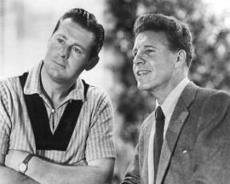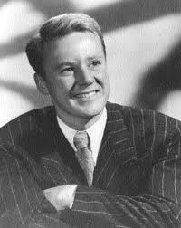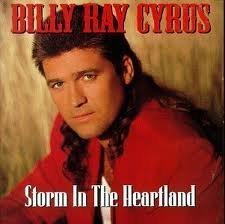Aspirin, also known as acetylsalicylic acid (ASA), is a medication used to reduce pain, fever, and/or inflammation. Specific inflammatory conditions which aspirin is used to treat include Kawasaki disease, pericarditis, and rheumatic fever.
Aspirin is also used long-term to help prevent further heart attacks, ischaemic strokes, and blood clots in people at high risk. For pain or fever, effects typically begin within 30 minutes. Aspirin is a nonsteroidal anti-inflammatory drug (NSAID) and works similarly to other NSAIDs but also suppresses the normal functioning of platelets.
In 1897, scientists at the Bayer company began studying acetylsalicylic acid as a less-irritating replacement medication for common salicylate medicines. By 1899, Bayer had named it "Aspirin" and sold it around the world.
Aspirin's popularity grew over the first half of the 20th century, leading to competition between many brands and formulations. The word Aspirin was Bayer's brand name; however, their rights to the trademark were lost or sold in many countries. The name is ultimately a blend of the prefix a(cetyl) + spir Spiraea, the meadow sweet plant genus from which the acetylsalicylic acid was originally derived at Bayer + -in, the common chemical suffix.
Medicines made from willow and other salicylate-rich plants appear in clay tablets from ancient Sumer as well as the Ebers Papyrus from ancient Egypt. Hippocrates referred to the use of salicylic tea to reduce fevers around 400 BC, and willow bark preparations were part of the pharmacopoeia of Western medicine in classical antiquity and the Middle Ages. Willow bark extract became recognized for its specific effects on fever, pain, and inflammation in the mid-eighteenth century. By the nineteenth century, pharmacists were experimenting with and prescribing a variety of chemicals related to salicylic acid, the active component of willow extract.
In 1853, chemist Charles Frédéric Gerhardt treated sodium salicylate with acetyl chloride to produce acetylsalicylic acid for the first time; in the second half of the 19th century, other academic chemists established the compound's chemical structure and devised more efficient methods of synthesis. In 1897, scientists at the drug and dye firm Bayer began investigating acetylsalicylic acid as a less-irritating replacement for standard common salicylate medicines, and identified a new way to synthesize it. By 1899, Bayer had dubbed this drug Aspirin and was selling it globally. The word Aspirin was Bayer's brand name, rather than the generic name of the drug; however, Bayer's rights to the trademark were lost or sold in many countries. Aspirin's popularity grew over the first half of the 20th century leading to fierce competition with the proliferation of aspirin brands and products.
Aspirin's popularity declined after the development of acetaminophen/paracetamol in 1956 and ibuprofen in 1962. In the 1960s and 1970s, John Vane and others discovered the basic mechanism of aspirin's effects, while clinical trials and other studies from the 1960s to the 1980s established aspirin's efficacy as an anti-clotting agent that reduces the risk of clotting diseases. The initial large studies on the use of low-dose aspirin to prevent heart attacks that were published in the 1970s and 1980s helped spur reform in clinical research ethics and guidelines for human subject research and US federal law, and are often cited as examples of clinical trials that included only men, but from which people drew general conclusions that did not hold true for women.
Aspirin sales revived considerably in the last decades of the 20th century, and remain strong in the 21st century with widespread use as a preventive treatment for heart attacks and strokes.
Here's a casserole side dish that tastes rich enough to serve for the holidays, or when you've got company coming over. Our Rice and Asparagus Casserole is creamy, cheesy, and full of fresh asparagus. It's an unforgettable side dish!
- 1 pound fresh asparagus, cleaned, trimmed, and cut into 1-inch pieces
- 3 cups cooked rice, cooled
- 1/2 teaspoon salt
- 1/2 teaspoon onion powder
- 1/4 teaspoon cayenne pepper
- 1/2 cup sour cream
- 3/4 cup milk
- 2 cups (8 ounces) shredded sharp Cheddar cheese, divided
- Preheat oven to 350º. Coat a 8-inch-square baking pan with cooking spray
- In a large pot of boiling water, cook asparagus until tender-crisp, about 5 minutes.
- In a medium-sized bowl, combine rice, salt, onion powder, cayenne pepper, sour cream, milk, and 1-1/2 cups of cheese.
- Spoon half of rice mixture into prepared baking pan. Arrange three-quarters of asparagus on top, then spoon remaining rice mixture over asparagus. Top with remaining asparagus.
- Bake 30 minutes. Sprinkle remaining cheese over top and bake and additional 5 minutes.
A Trip Through Time
HOW TO OBSERVE
On August 25th, people across the United States observe National Whiskey Sour Day.
Traditionally garnished with half an orange and a maraschino cherry, a whiskey sour is a mixed drink containing whiskey (often bourbon), lemon juice, and sugar. Whiskey sours are shaken then either served straight or over ice.
“Too much of anything is bad, but too much good whiskey is barely enough.” – Mark Twain
Alternatives to the traditional whiskey sour are the Boston sour and the Ward 8. The Boston sour adds a dash of egg white to the recipe. The Ward 8 uses either a Bourbon or rye whiskey base with both lemon and orange juices and grenadine syrup added for sweetness.
The first mention of a whiskey sour was in an 1870 Wisconsin newspaper.
- After opening, a bottle of whiskey will remain good for five years.
- An unopened bottle of whiskey can be kept for over 100 years and will still be fit to drink.
- Both “Whisky” and “Whiskey” spellings are correct. Whisky is specific to Scotch Whisky, and Whiskey is Irish.
- In 2004, Alabama named Conecuh Ridge Whiskey as its official state spirit.
- According to legend, Jack Daniels ran away at the age of 6 and learned to make whiskey from a Lutheran minister.
HOW TO OBSERVE NATIONAL WHISKEY SOUR DAY
Celebrate by enjoying a whiskey sour! Invite a friend to join you. Don’t hesitate to try a twist on the whiskey sour. While you enjoy your cocktail, explore the history of whiskey, its production, and trade. We recommend:
- The documentaries Straight Up and Scotch: The Golden Dram
- Whiskey Master Class by Lew Bryson
- Whiskey Women: The Untold Story of How Women Saved Bourbon, Scotch and Irish Whiskey by Fred Minnick
- Dead Distillers by Colin Spoelman and David Haskell
(Remember always to drink responsibly and never drink and drive.)























No comments:
Post a Comment